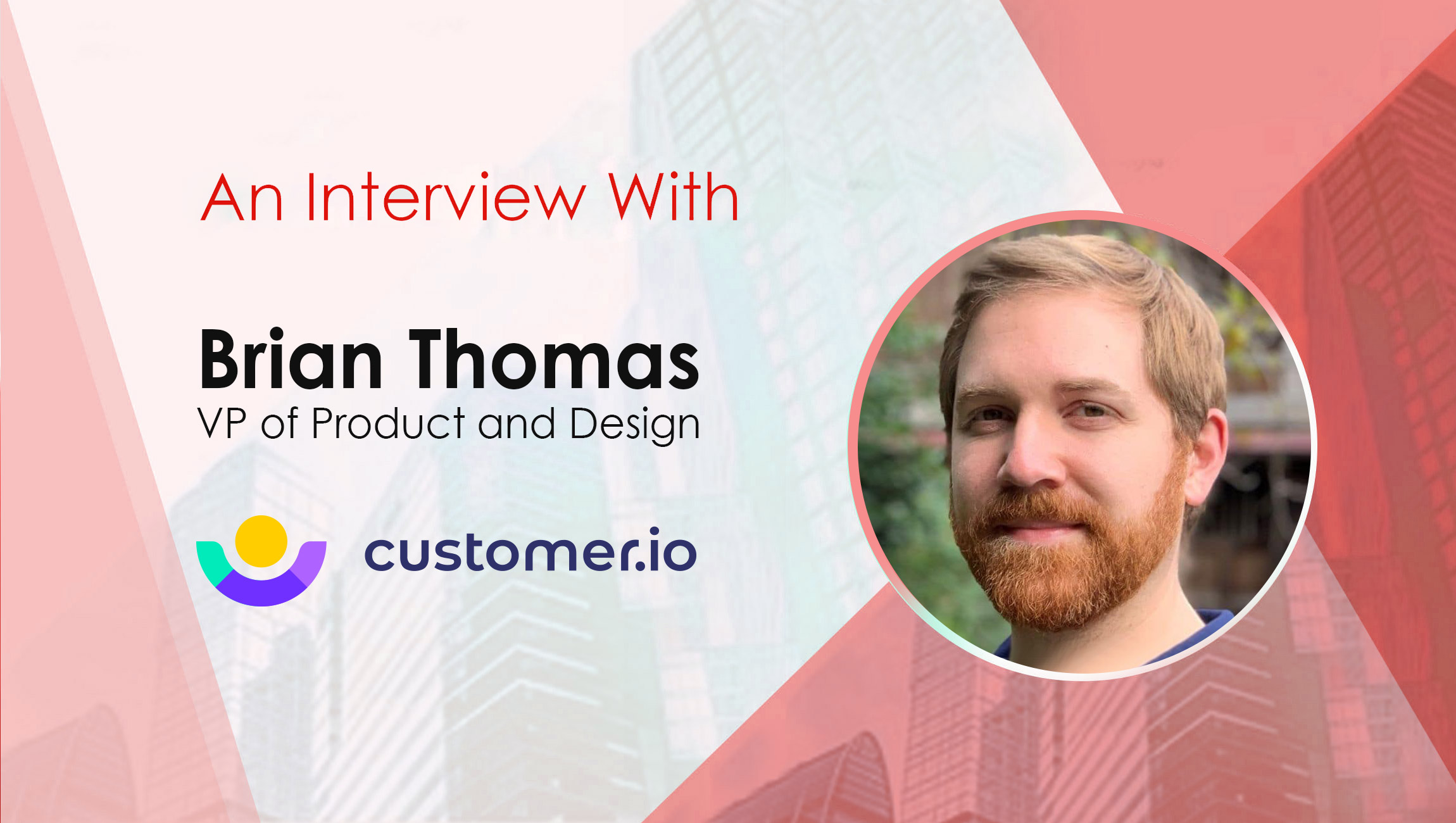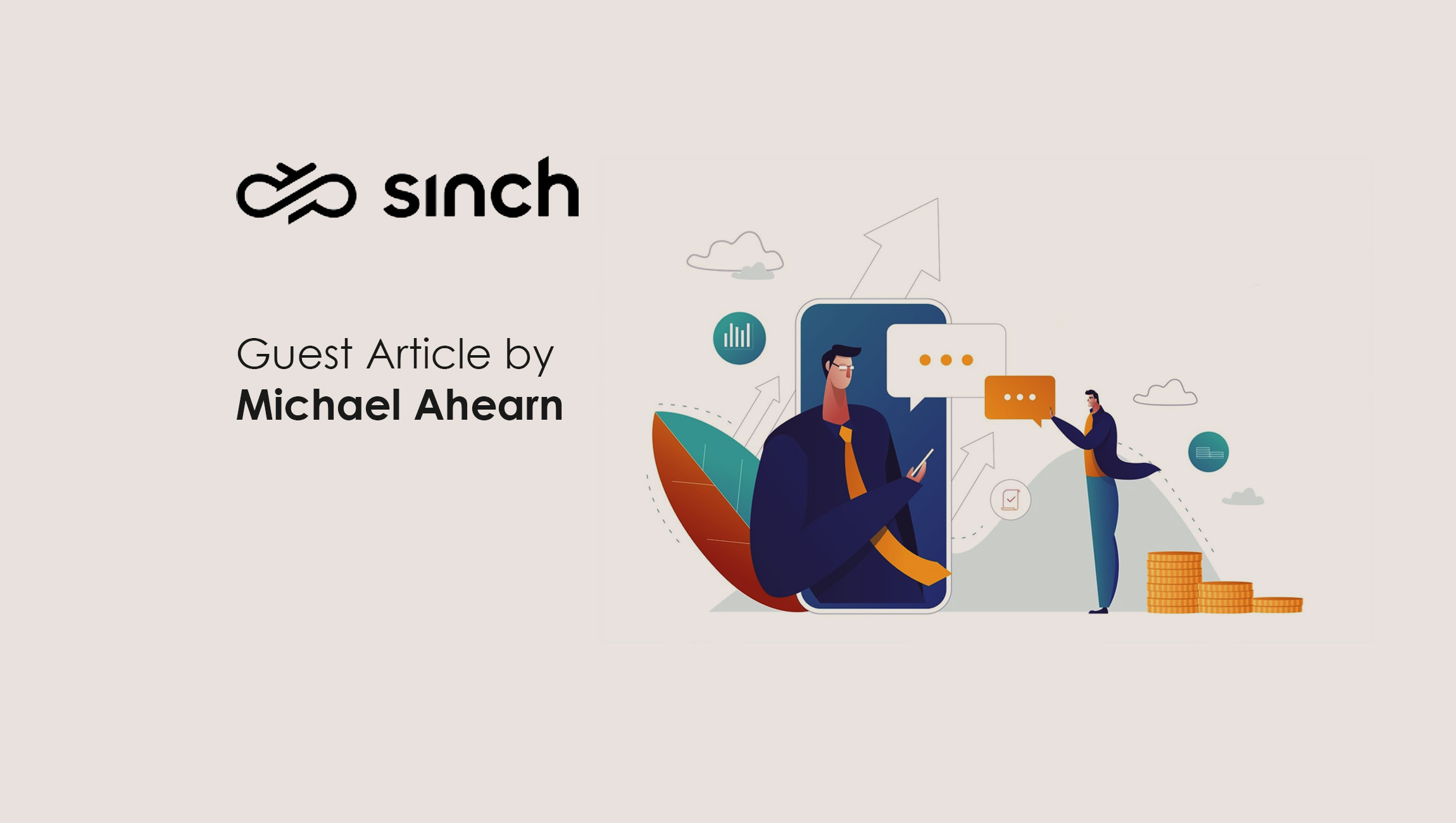Brian Thomas, VP of Product and Design at Customer.io shares a few proven product marketing must-dos and best practices in this quick catch-up:
___________
Welcome to this MarTech Series chat, Brian, tell us about yourself and more about your role at Customer.io…
I’ve been leading product and design at Customer.io for a bit over 5 years. I love being where our customers, design, engineering, and business strategy intersect. What originally interested me about this space was how the messages people receive are often dull, mistimed, repetitive, and overbearing. Everyone I know struggles with message overload in some way across their devices. This motivates me. I’m inspired by the creativity our customers bring to the challenge of breaking out of this status quo and sending meaningful messages.
We’d love to hear more about the Customer.io platform and how its evolved over the years…a few highlights on some of the newest features/innovations? We’d love to hear more about your recent acquisition of Parcel as well!
We provide an extraordinarily flexible automation platform for customer communication (email, mobile push, SMS, etc). It’s a canvas where marketers can dream up their ideal way of communicating with their customers and make it a reality without every little thing requiring requests from their engineering teams.
Most recently, we introduced a new channel: In-App Messages for both web and mobile apps. This enables our customers to design and deliver custom experiences directly into their apps. These are set up within the same automated workflows as email, push, and any other channel so our customers can ensure consistency across every touchpoint. We’ve also spent a lot of time lately on tools allowing customer profile data to be directly synced from SQL databases and warehouses. This reduces the amount of effort required to gather what you need in order to send truly personalized messages.
We acquired Parcel because we believe it’s the best platform out there for people coding emails. We saw both the opportunity to help get Parcel into the hands of every email creator as well as to deliver a seamless integration with Customer.io. It’s incredible how fast our customers can work when both their profile data and the best creation experience are together in one place.
Marketing Technology News: MarTech Interview with Heidi Arkinstall, CMO at G-P
How can email code editors enable marketers to drive better customer engagement? How do you feel marketers can optimize and make better use of these capabilities?
It’s common knowledge that writing code for emails is uniquely challenging. It’s not the same HTML and CSS you use for websites, and every single email client has its own unique rendering quirks. Yet, writing code is the only way to send messages that perfectly match your brand, are efficient in every email client, and build compelling designs that emphasize the content.
This is what makes Parcel so amazing – it’s built from the ground up with email in mind. It is designed to make the process smooth by providing tools for helping people work efficiently through all the trickiest parts of email design. For example, Parcel has a component system. This allows customers to build emails with a design system approach. They can create reusable components (much like those in modern frontend development frameworks) and use them to speed up the production process of building emails.
When it comes to B2B customer engagement challenges, what are some of the biggest problems you still see modern marketers face?
I most often see marketers struggling with the challenge of not having the data available at the right time to send the message they’re dreaming of. They’re trying to hack something together or constantly waiting for the next engineering sprint. They keep attempting to construct a single point of truth for customer profiles, and it doesn’t work – it’s like shooting an arrow at a moving target. They’re needing to learn to work with technical tools like webhooks themselves to organize their data flow.
It’s not just about having the right data for sending messages but also understanding if their messages are working. They’re trying to rely on opens and clicks to predict whether or not messages are effective, despite momentum in the industry like Apple’s Mail Privacy Protection making a large portion of that data meaningless. It’s challenging to get behavior-based conversions working.
On top of all that, some of the oldest problems in the industry are still prevalent. Email deliverability is an ever-present challenge. Constantly managing reputation, paying attention to how your recipients are engaging, and quickly adjusting tactics to ensure your messages are being reliably delivered is a constant time sink.
Marketing Technology News: The Modern Marketer Is Closer Than You Think
What are the five top of mind thoughts/tips you’d share with B2B product leaders?
1 – Customer Obsession > Frameworks. It’s okay that our teams don’t do the things on everyone’s top 5 lists. No matter which product management frameworks you implement, there are many successful paths to creating value for customers that a strong business can be built on. Cut your team a break and keep your eye on the customer.
2 – Clear writing is clear thinking. It takes a ton of time and practice to raise the standard of writing on a team, but the clarity of debate that emerges is worth every minute invested.
3 – Craft your team environment. I aspire to craft the environment for my team as meticulously as my team crafts our product. As product leaders, the ideas we repeat, the team rituals, and the type of energy we bring to every interaction has a massive multiplier effect on what teams accomplish.
4 – Give candid feedback. A feedback culture is worth practicing and constantly reinforcing. I use the pattern: “Reaction. Reasoning. Alternative.” Be candid about your reaction to something, always back that up with a clear explanation, and provide an alternative path if you can think of one.
5 – Empower your engineers. There is no force more powerful than empowering your engineers. Arm them with the best information about customers, the business, and your design system. They are the only ones who can see the whole picture: the connection between what’s feasible and what’s valuable.
Some last thoughts on the future of martech and B2B marketing?
No amount of tooling is a substitute for the craft of the people who are putting together customer journeys and coming up with the content for messages. Automation and AI will certainly provide assistance and enable greater scale; however, the marketers who know their customers best, who are mindful of what’s creating value for their audience, and who closely connect messages to product experience will, in the long run, be the most successful. The future of marketing is one where messages are mutually beneficial: both the recipient and the sender are gaining value from the communication. Consumers will find the tool to silence everything else. It’s a balance worth aspiring to, and that I’ll keep building systems to help enable.
Customer.io is a Customer Engagement Platform for tech-savvy marketers who want more control and flexibility to craft and send data-driven emails, push notifications, SMS, and in-app messages. Customer.io is a globally distributed, remote-first company with over 200 people in 33 countries.
Brian Thomas is the VP of Product and Design at Customer.io. Passionate about nurturing creativity and bottom-up thinking in the teams he leads, Brian and his team make sophisticated automation tools accessible to every marketer. Before joining the team, he spent nine years in product management and engineering across several Creative Cloud products at Adobe.
Missed The Latest Episode of The SalesStar Podcast? Have a quick listen here!
Episode 142: Go-To-Market Best Practices with Jeffrey Ha, Chief Go-to-Market Officer at Rev
Episode 141: B2B Revenue Generation Tips with Marjorie Janiewicz, Chief Revenue Officer at Foursquare
Episode 140: Sales Enablement Tips for B2B Teams with Mark Magnacca, Co-founder and President at Allego











